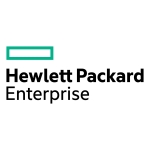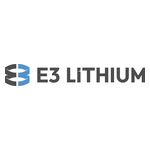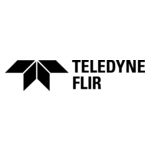Study reveals how sustainability leaders harness advanced technologies, including AI, IoT and photonics to reach emissions targets
New NTT Survey: Up to 95% of Enterprises Falling Short of Net-Zero Carbon Goals
Nick Gibiser
Wireside Communications®
For NTT
+1-804-500-6660
ngibiser@wireside.com
A new survey of 500 global enterprises commissioned by NTT Corporation (NTT) found that 68% of companies self-reported they are not on track to meet their net-zero carbon emissions goals. However, further evaluation indicates that as many as 95% of respondents may fall behind on their plans. Conducted in collaboration with global research firm ThoughtLab Group, NTT commissioned the study, Exploring the Paths to Net Zero, to assess the current state of corporate sustainability efforts worldwide.
“While the results of this survey clearly indicate that large companies have more work to do to improve their sustainability practices, it is also cause for optimism,” said Vito Mabrucco, Global Chief Marketing Officer at NTT. “By learning about the processes, innovations and technological implementations of firms that are achieving or exceeding their net-zero goals, companies may improve their own plans to cut emissions while simultaneously developing a collaborative spirit of global corporate sustainability for the betterment of all.”
Key Findings:
- More than two-thirds (68%) of surveyed enterprises self-reported that they are behind schedule on their net-zero targets. But given the steep incline in emission reductions needed to reach net-zero, the actual number could become as high as 95%, according to the latest ThoughtLab analysis commissioned by NTT.
- Companies behind schedule (“followers”) cite several causes, including rising data usage, the growing resource demand of artificial intelligence, balancing net-zero goals with business goals and overlooking shocks like geopolitical disruptions.
- 9% of enterprises (“leaders”) report that they are on target to reach net-zero targets either on schedule or ahead of schedule, despite setting tougher goals for themselves. Leading firms are taking advantage of advanced technologies such as AI, IoT and photonics to reach their emissions goals.
Why Enterprises are Falling Behind
While many companies have set their targeted achievement of net-zero emissions between 2030 and 2050 (with an average target year of 2047), the survey found that the firms so far have reduced their greenhouse gas emissions at a compound average growth rate (CAGR) of 4.2% per year. However, the organizations would need to increase that figure to 11.1% to meet their target-year goals, which many may find challenging.
The analysis revealed three key reasons why many corporations are falling short:
-
Rising Data Usage: As AI accelerates the energy consumption of data usage, the survey found that 57% of participating companies have not accounted for an exponential growth of data in their net-zero plans. Plus, 65% of top technology officers surveyed stated large increases in data usage have made it difficult to achieve their company’s net-zero goals.
Data centers have become a nexus between organizational digital transformation and growing carbon emissions, especially as AI accelerates electricity demand. As the volume of data doubles globally every two years, 60% of top technology officers listed reducing data center emissions as a top priority; however, emissions from data centers continue to rise for most organizations, on average by 1.5% over the last two years. -
Facing Internal and External Challenges: Internally, 65% of companies cited the difficulty of balancing net-zero and business goals, bearing the cost of transitioning to sustainable practices while meeting shareholder profit expectations. Additionally, 55% of companies believe they have insufficient access to internal, necessary emissions data and 50% lack an actionable net-zero roadmap and implementation plan to reach their goals.
Externally, 68% of surveyed companies noted the difficulty of keeping up with governmental regulations and 50% of respondents also cited the digital divide as a major external obstacle to meeting net-zero targets. - Overlooking Potential Shocks: Companies falling behind on their net-zero goals often failed to incorporate critical assumptions into their plans, such as economic and geopolitical disruption, supply chain constraints, the availability of government subsidies and more. About 33% of executives surveyed responded that “many” assumptions their companies made when codifying net-zero plans are no longer valid, with 51% reporting they are “unsure” if their assumptions remain valid.
Sustainability Leaders Illuminate Paths Forward
Of the 500 surveyed firms, 44 (9%) are identified as “leaders,” self-reporting on target or ahead of their net-zero goals, accounting for Scope 1, Scope 2 and Scope 3 emissions and having a net-zero target date of before 2050. Survey analysis revealed three categories of tools these leaders are leveraging to meet their targets:
-
Artificial Intelligence: AI enables enterprises to gain deeper insights from internal and external data more efficiently, with 39% of leaders using AI for net-zero decision support and planning (as opposed to 28% of other firms) and 23% using AI for energy optimization (as opposed to 14% of other firms). In total, 48% of surveyed companies did not use AI at all to achieve their net-zero goals.
While AI’s growth and related carbon footprint has negatively impacted some organizations’ net-zero progress, leaders are strategically harnessing AI to simultaneously achieve business goals and meet emissions targets. The expansion of AI and other data-reliant tools has accelerated energy demands from data centers, but these leaders have reduced their data center emissions over the past two years by drawing on renewable energy sources, optimizing cooling systems and taking other actions. -
Advanced Technologies: Leaders harness IoT technologies at a greater rate than followers to monitor emissions, conserve water and energy and create smarter buildings. Plus, twice as many leaders as followers use digital twins—virtual models of physical assets—to provide real-time insights used to optimize energy usage, reduce waste and more.
Leaders are also optimistic about the role photonics-based infrastructure will play in corporate sustainability, with 52% believing this infrastructure will be “moderately to very valuable” for reaching net-zero goals. Today, 25% of leaders are already using photonic networks to achieve net-zero goals (opposed to 11% of followers)—with one CEO of a Japanese manufacturer stating that photonics-based technology resulted in energy savings of about 30% for their company. - Strong Internal Structures and External Networks: The survey found leaders are more likely to implement key management initiatives than followers, including creating a clear business plan and dedicated budget for decarbonization (55% vs. 45%); establishing clear policies and governance around decarbonization (55% vs. 41%); and appointing an executive and dedicated team to oversee decarbonization initiatives (50% vs. 40%).
And while leaders in 2023 spent $81.4 million on average to achieve their net-zero goals compared to $60.7 million for followers, they were more effective than followers in offsetting these costs with benefits from their emission reduction programs.
To access content related to the full report, Exploring the Paths to Net Zero, please visit: https://www.global.ntt/net-zero/
For more information about NTT and sustainability, please visit: www.global.ntt/sustainability/
Methodology
ThoughtLab conducted a survey in Q1 2024 commissioned by NTT of 500 executives, C-level and direct reports, from 500 global enterprises with revenues ranging from $500 million to $100 billion across five major industries: automotive and industrial manufacturing; financial services; retail and consumer goods; telecommunications and technology; and healthcare and life sciences. Geographically, 150 respondents participated from Asia Pacific (Australia/New Zealand, Japan, Singapore) 175 respondents participated from Europe (France, Germany, Poland, U.K.) and 175 participated from North America (Canada, Mexico, U.S.).
About NTT
NTT contributes to a sustainable society through the power of innovation. We are a leading global technology company providing services to consumers and businesses as a mobile operator, infrastructure, networks, applications, and consulting provider. Our offerings include digital business consulting, managed application services, workplace and cloud solutions, data center and edge computing, all supported by our deep global industry expertise. We are over $97B in revenue and 330,000 employees, with $3.6B in annual R&D investments. Our operations span across 80+ countries and regions, allowing us to serve clients in over 190 of them. We serve over 75% of Fortune Global 100 companies, thousands of other enterprise and government clients and millions of consumers.
View source version on businesswire.com: https://www.businesswire.com/news/home/20240924322524/en/
A new study by @NTTPR and @ThoughtLabGroup found that 68% of enterprises self-reported as behind on their #netzero emission plans. The actual number may be as high as 95%. Learn how leaders are using technology like #AI to reach their targets.
 Business wire
Business wire 











Add Comment